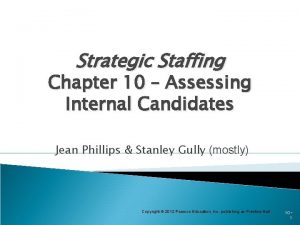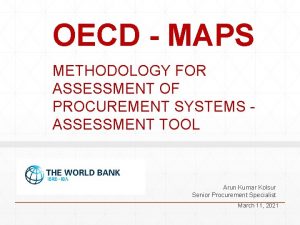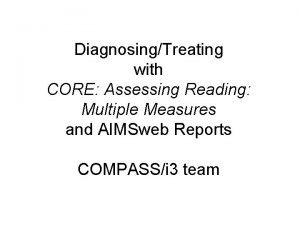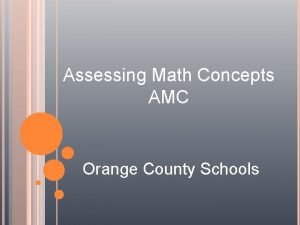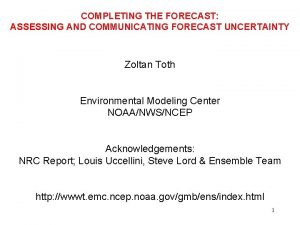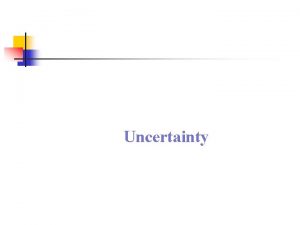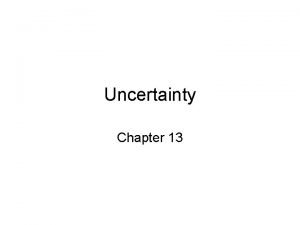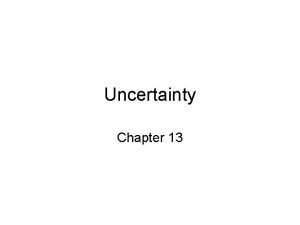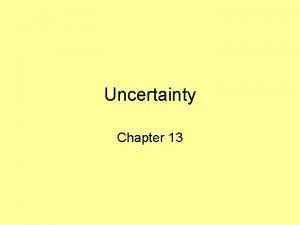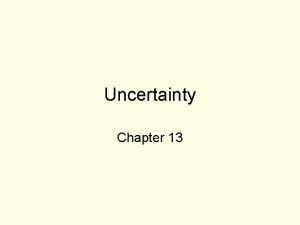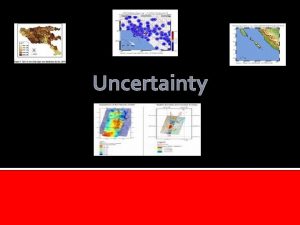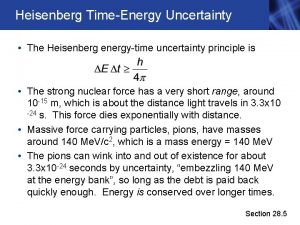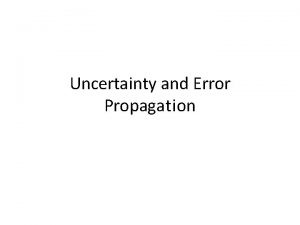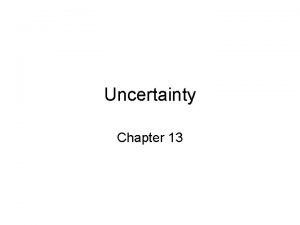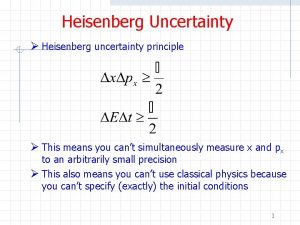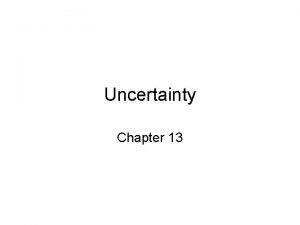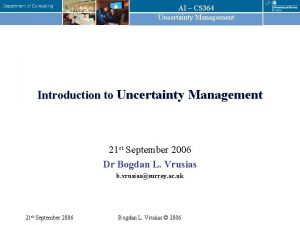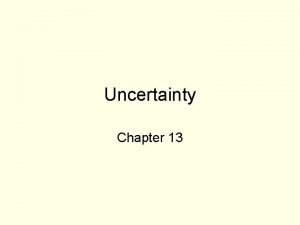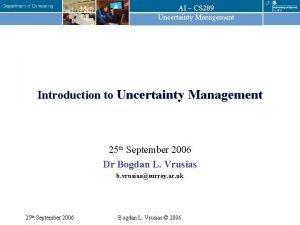Assessing Forecast Uncertainty in the National Digital Forecast




















- Slides: 20

Assessing Forecast Uncertainty in the National Digital Forecast Database AMS Weather Analysis and Forecasting Matt Peroutka, Greg Zylstra, John Wagner NOAA/NWS Meteorological Development Lab August 1, 2005

National Digital Forecast Database (NDFD) n n n Contains a mosaic of NWS digital forecasts Is available to all users and partners – public and private Allows users and partners to create wide range of text, graphic, and image products

How is NDFD Produced? National Centers Model Guidance – Detailed – Interactive – Collaborative Grids Field Offices Local Digital Forecast Database Collaborate National Centers Data and Science Focus NWS Automated Products LY. LIKEOVE B. RAIN LY A AY. . TODOW LIKE. SNOWBY SN 0 FEET ATION N 1 250 CUMULERNOOOVE AC E AFT ES AB DER LAT 2 INCH. COL TO 40. TO 0 FEETHS 35 D 5 250 H HIG ST WINTING WITUTHEAH SHIF SO 10 MP Y ARL TO THE STE N. TO UTHWE RNOO SO IS AFTEOF 0%. 7 N H E T ANC ATIO CH ECIPIT PR Digital Text Graphic Voice User-Generated Products National Digital Forecast Database

Single-valued Forecasts n n n Most NDFD weather elements are singlevalued Can be viewed as a limitation Forecast uncertainty information can enhance customer decision processes

Numeric Uncertainty Assessment of NDFD via Climatology and Ensembles (NUANCE)

Development and Implementation n Development – Amass observation (x) and forecast (f) pairs – Model joint distribution, p(f, x) – Refine with diagnostic data (d) to form p(f, x, d) n Implementation – Use current values of f and d, and p(f, x, d) – Infer conditional distribution of observations, p(x|f, d)

Data Sources n n n Ideally, NDFD grids and Analysis of Record Prototype with NDFD point forecasts and METAR observations Ensemble MOS (ENSMOS) archives – One set of forecasts from control run – Five sets of forecasts created from runs with positive perturbations – Five sets of forecasts created from runs with negative perturbations

Diagnostic Data Standard Deviation (SD) of 11 ENSMOS forecasts. n “Ensemble Deviation” (ED) n – Difference each perturbed forecast with control forecast – Compute root mean square

Transformation to Percentiles n Useful to transform both f and x from native values to climatological percentiles – Data from U. S. Historical Climatology Network (USHCN) n n Addresses lack of extreme cases in development data Encourages combining of data – NDFD has a short history – Expect p(f, x) to vary by region and by forecast

Development Phase

Implementation Phase

Results: Transformation to Percentiles n n n Obtained daily maximum temperature (Max. T) observations for 168 stations from USHCN Computed percentile function at 5 -day intervals throughout the year Used Generalized Lambda Distribution to model percentile function – Percentile function fitted to observations. – Fit parameters expressed as cosine series over day of the year. – Quality of fit judged subjectively. – Additional terms added to cosine series, if needed.

Results of Percentile Transform Technique for Blythe, California

Comparison of Max. T Percentiles Baudette, Minnesota (KBDE; blue) Fort Lauderdale, Florida (KFLL; purple) Blythe, California (KBLH; red)

Results: Modeling Joint Distribution



Day 1 vs. Day 7 n n n Day 1 forecasts verify better Day 7 points cluster around the 0. 50 forecast value more Fewer extreme forecasts on Day 7

Results: Diagnostic Data n n n Day 7 forecasts, stratified by Ensemble Deviation. ED < 6° F (above) vs. ED ≥ 6° F (below). Suggests more skillful forecasts when ED < 6° F, but relationship is not obvious.

Future Plans Quantitatively assess uncertainty n Expand to include minimum temperature n Work with grids n Prototype experimental guidance products n
 Imt 556
Imt 556 Btec sport unit 3
Btec sport unit 3 Unit 18 assessing children's development support needs
Unit 18 assessing children's development support needs Assessing grammar effectively
Assessing grammar effectively Career stage 2 proficient teacher
Career stage 2 proficient teacher Assessing need for hrd
Assessing need for hrd What is informal assessment
What is informal assessment Manual for assessing safety hardware
Manual for assessing safety hardware Cultural dynamics in assessing global markets
Cultural dynamics in assessing global markets Assessing a new venture's financial strength and viability
Assessing a new venture's financial strength and viability Assessing cardiorespiratory fitness
Assessing cardiorespiratory fitness Assessing leadership and measuring its effects
Assessing leadership and measuring its effects Many new drivers first fender bender is a backing collision
Many new drivers first fender bender is a backing collision Module 4 topic 1 assessing and managing risk
Module 4 topic 1 assessing and managing risk A nine box matrix requires assessing employees on ________.
A nine box matrix requires assessing employees on ________. Oecd maps
Oecd maps Core multiple measures
Core multiple measures While assessing the risks of material misstatement
While assessing the risks of material misstatement Amc orange county
Amc orange county Assessing health status chapter 22
Assessing health status chapter 22 Assessing motivation to change
Assessing motivation to change














